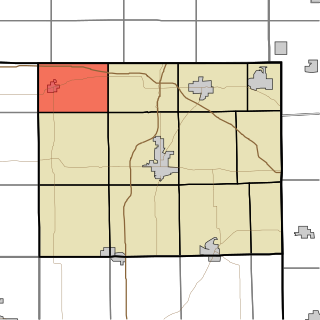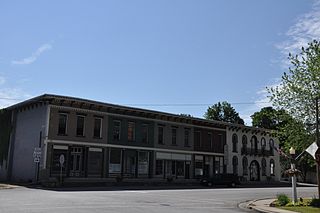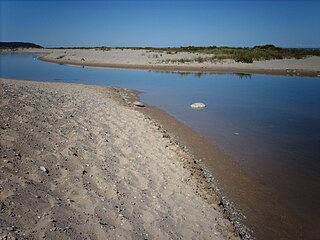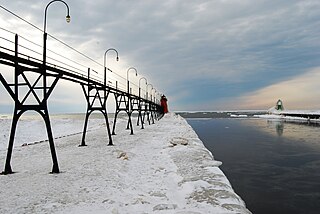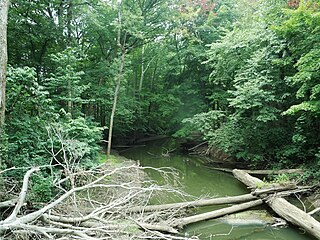| Fawn River | |
|---|---|
The Fawn River in Florence Township, Michigan | |
| Country | United States |
| Physical characteristics | |
| Main source | Steuben County north of Orland, Indiana 939 ft (286 m) 41°44′19″N85°10′01″W / 41.7386111°N 85.1669444°W |
| River mouth | Confluence with the St. Joseph River at Constantine, Michigan 774 ft (236 m) 41°50′45″N85°40′02″W / 41.8458333°N 85.6672222°W Coordinates: 41°50′45″N85°40′02″W / 41.8458333°N 85.6672222°W |
| Length | 55 mi (89 km) |
| Basin features | |
| Progression | Fawn River → St. Joseph River → Lake Michigan → Great Lakes → St. Lawrence River → Gulf of St. Lawrence |
| GNIS ID | 452598 |
The Fawn River is a 55.4-mile-long (89.2 km) [1] river in southwest Michigan and northeast Indiana in the United States. It flows into the St. Joseph River in the city of Constantine, Michigan. The headwaters rise in a series of lakes and marshes in northern Steuben County, Indiana near Pokagon State Park, where it is known as "Crooked Creek" and "Little Fawn River". It flows west-northwest across the northeast corner of LaGrange County, Indiana and then over the state line across the southeast corner of Branch County, Michigan before entering St. Joseph County, Michigan. Passing to the south of Sturgis, Michigan, the river meanders across the state line a few more times before flowing north into Constantine. Except for Constantine, the river does not flow through any large communities, although it passes near Fremont, Indiana, Orland, Indiana, Sturgis, Howe, Indiana, and White Pigeon, Michigan.

A river is a natural flowing watercourse, usually freshwater, flowing towards an ocean, sea, lake or another river. In some cases a river flows into the ground and becomes dry at the end of its course without reaching another body of water. Small rivers can be referred to using names such as stream, creek, brook, rivulet, and rill. There are no official definitions for the generic term river as applied to geographic features, although in some countries or communities a stream is defined by its size. Many names for small rivers are specific to geographic location; examples are "run" in some parts of the United States, "burn" in Scotland and northeast England, and "beck" in northern England. Sometimes a river is defined as being larger than a creek, but not always: the language is vague.
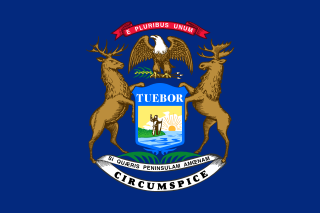
Michigan is a state in the Great Lakes and Midwestern regions of the United States. The state's name, Michigan, originates from the Ojibwe word mishigamaa, meaning "large water" or "large lake". With a population of about 10 million, Michigan is the tenth most populous of the 50 United States, with the 11th most extensive total area, and is the largest state by total area east of the Mississippi River. Its capital is Lansing, and its largest city is Detroit. Metro Detroit is among the nation's most populous and largest metropolitan economies.

Indiana is a U.S. state located in the Midwestern and Great Lakes regions of North America. Indiana is the 38th largest by area and the 17th most populous of the 50 United States. Its capital and largest city is Indianapolis. Indiana was admitted to the United States as the 19th U.S. state on December 11, 1816. Indiana borders Lake Michigan to the northwest, Michigan to the north, Ohio to the east, Kentucky to the south and southeast, and Illinois to the west.
Contents
Fawn River Township, Michigan is named after the river.

Fawn River Township is a civil township of St. Joseph County in the U.S. state of Michigan. The population was 1,648 at the 2000 census. The township is named for the Fawn River.


